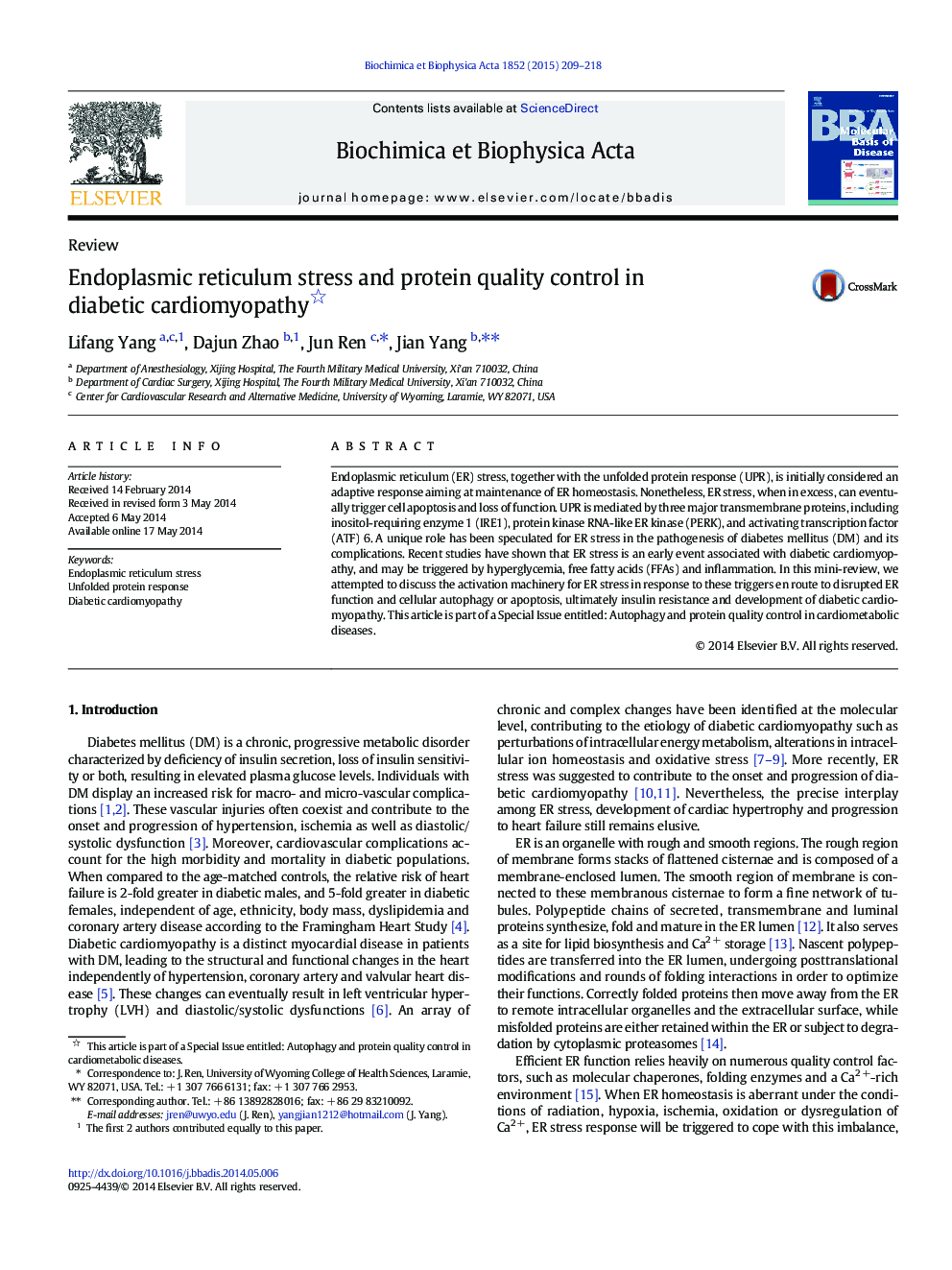| Article ID | Journal | Published Year | Pages | File Type |
|---|---|---|---|---|
| 1904609 | Biochimica et Biophysica Acta (BBA) - Molecular Basis of Disease | 2015 | 10 Pages |
•Diabetic cardiomyopathy is accompanied with ER stress and UPR in the heart.•Hyperglycemia, FFA and inflammation trigger ER stress in the heart.•ER stress promotes cell autophagy in diabetic heart.•Targeting ER stress may be a useful therapeutic strategy in diabetic cardiomyopathy.
Endoplasmic reticulum (ER) stress, together with the unfolded protein response (UPR), is initially considered an adaptive response aiming at maintenance of ER homeostasis. Nonetheless, ER stress, when in excess, can eventually trigger cell apoptosis and loss of function. UPR is mediated by three major transmembrane proteins, including inositol-requiring enzyme 1 (IRE1), protein kinase RNA-like ER kinase (PERK), and activating transcription factor (ATF) 6. A unique role has been speculated for ER stress in the pathogenesis of diabetes mellitus (DM) and its complications. Recent studies have shown that ER stress is an early event associated with diabetic cardiomyopathy, and may be triggered by hyperglycemia, free fatty acids (FFAs) and inflammation. In this mini-review, we attempted to discuss the activation machinery for ER stress in response to these triggers en route to disrupted ER function and cellular autophagy or apoptosis, ultimately insulin resistance and development of diabetic cardiomyopathy. This article is part of a Special Issue entitled: Autophagy and protein quality control in cardiometabolic diseases.
